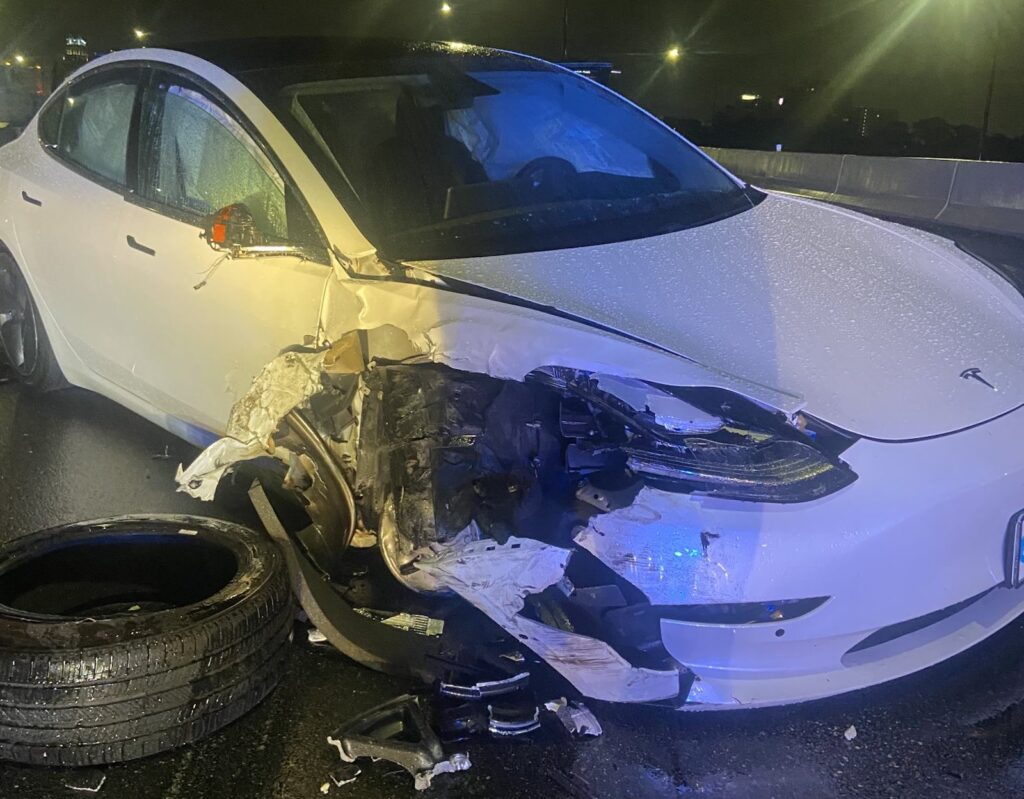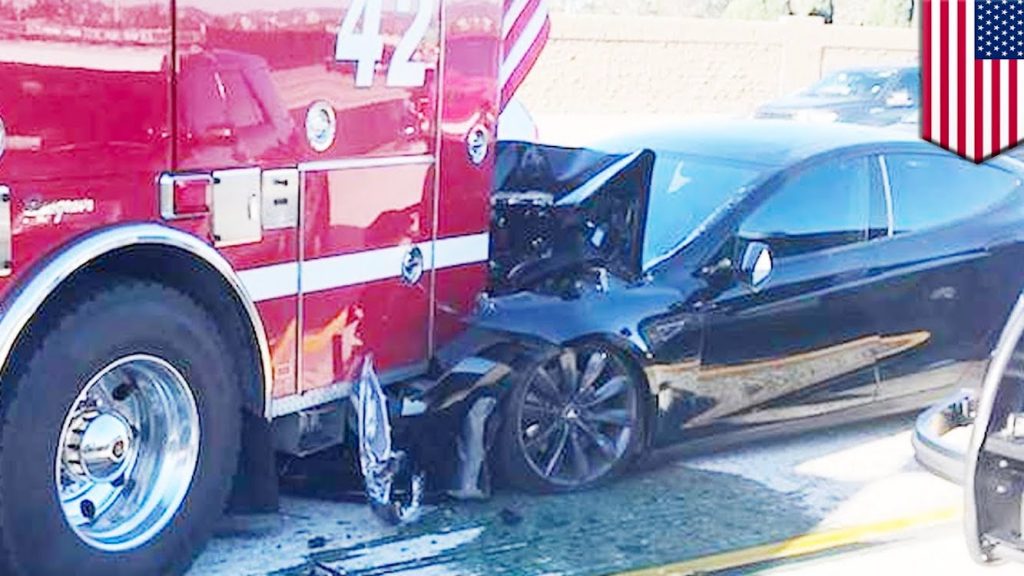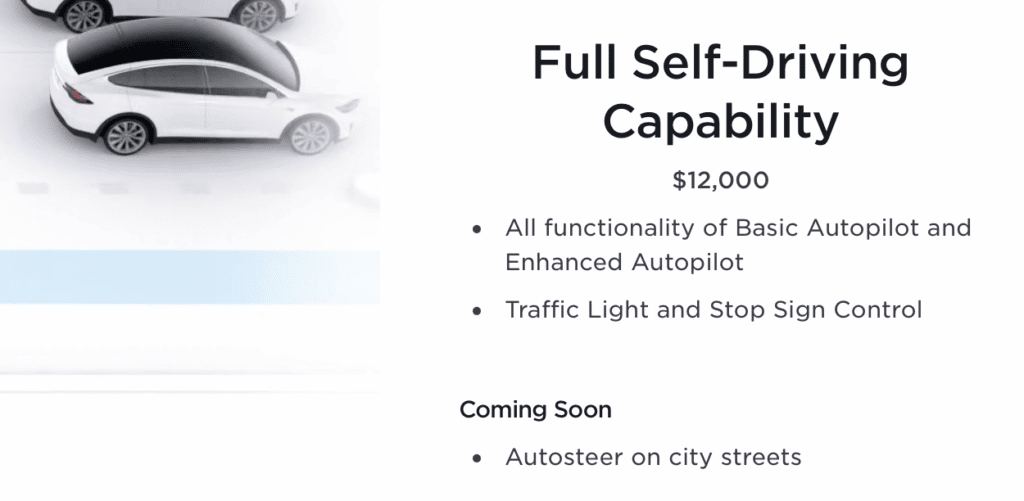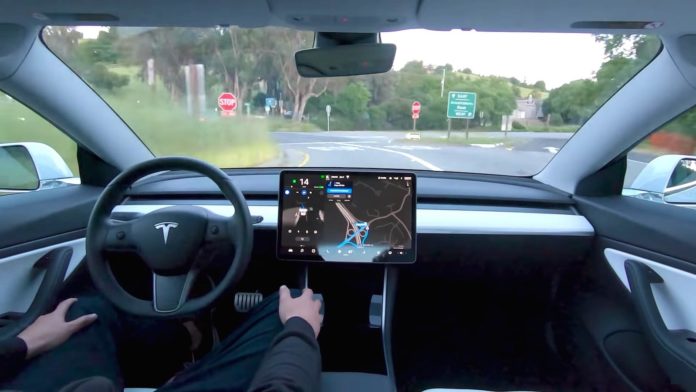Already facing intense federal scrutiny after a series of previous accidents, a newly reported 8-car crash on San Francisco’s Bay Bridge is setting off new alarm bells after a driver told authorities the incident was triggered by the “Full Self-Driving” system in use by his Tesla Model S.
Nine people were injured in the pileup on one of the city’s busiest Interstate routes, including a juvenile who was hospitalized.
While a final cause has yet to be determined, the driver claimed his all-electric sedan suddenly and unexpectedly applied the brakes. That’s an issue that regulators have been scrutinizing this past year, along with other potential problems involving not only the Full Self-Driving system but Tesla’s earlier Autopilot technology. The automaker itself warns owners using FSD that the system “may do the worst thing at the wrong time.”
Under investigation
While Tesla has been linked to a disproportionate share of accidents and other incidents involving semi- and fully autonomous vehicles, an assortment of other products and brands have raised concerns among safety advocates and regulators. Earlier this month, the National Highway Traffic Safety Administration began a formal investigation involving robocabs operated by General Motors’ San Francisco-based Cruise LLC. There have been numerous reports the driverless vehicles will slow or completely stop on their own, sometimes for extended periods of time.
New concerns about the safety of Tesla’s technology, however, could exacerbate the automaker’s ongoing stock price plunge. CEO Elon Musk has said the company’s semi-autonomous Full Self-Driving system, in particular, will be critical to future growth and profits.
Incident on the Bay Bridge

In the case of the Tesla crash, the incident occurred on Thanksgiving but CNN obtained a report filed Dec. 8. Authorities reported the owner of the vehicle at fault said it suddenly braked while operating in Full Self-Driving mode, slowing from about 55 to 20 mph.
Security cameras captured the incident, a subsequent review showing the Tesla first changing lanes before slowing to a stop. There was no indication of any external reason for it to brake, according to the video. That is in line with claims made by numerous Tesla owners who have purchased the popular option.
“Without warning, at random”
NHTSA notes in its probe of the alleged problem that vehicles can suddenly brake “without warning, at random, and often repeatedly in a single drive.”
It’s just the latest in a series of investigations launched by both NHTSA and the National Transportation Board looking into the safety of Tesla’s two semi-autonomous driving systems.
In August 2021, regulators began looking at a series of crashes in which Tesla models using Autopilot would veer into or fail to avoid stationary emergency vehicles.
In October of this year, the agency added to earlier data reports confirming the death of 10 more people involved in crashes linked to Tesla’s technologies.

Criminal probe underway
And Reuters later that month reported that the U.S. Justice Department was launching a criminal probe into the way the automaker promotes and sells Autopilot and FSD. About 830,000 vehicles are included in that probe. It follows a number of lawsuits and regulatory actions related to Autopilot and FSD that focus on the way Tesla, as well as CEO Musk himself, have handled the technologies.
One ongoing investigation, by the California Department of Motor Vehicles has the potential to lead to a statewide ban of Tesla products. Considering that California is the largest single market for the brand’s vehicles in the U.S., that could be a significant setback. Many of the affected vehicles are built at the automaker’s first assembly plant in Fremont, just outside of San Francisco.
Critics contend that Tesla has long overstated the capabilities of its semi-autonomous vehicle systems. While the automaker’s website does state that Autopilot and FSD require a driver to keep their hands on the wheel, Musk has called the earlier system “probably better than a human driver.” In a video released shortly after Autopilot’s launch, Musk was shown waving his arms outside the window of a Model S while driving.
Tesla has, however, claimed with its technology, “the car is driving itself.” And a video on its website says with FSD, “The person in the driver’s seat is only there for legal reasons. He is not doing anything. The car is driving itself.”

Musk himself has issued conflicting comments, repeatedly advising that a truly hands-free version of FSD was just on the verge of delivery. Most recently, he said that would happen by the end of 2022, but the latest software release again fell short. He recently declined to confirm if he would consider FSD either Level 4 or Level 5 autonomous, side stepping the question. And officials have defended the company in one lawsuit by saying it should be understood that the timing of such technology is not always easy to predict.
Tesla isn’t alone
Tesla isn’t the only automaker to push for the development of autonomous driving technology. General Motors, Nissan, Mercedes-Benz and Ford all offer retail systems that do permit a driver to go hands-free under limited conditions. But all stress the need for a driver to be ready to instantly retake control. And their systems rely on monitoring the driver’s behavior. They will slow, even stop if the motorist is distracted or disabled.
Tesla recently began adding a monitoring system after intense pressure from critics claiming the automaker had encouraged driver distraction.
Since the Biden administration came to Washington, NHTSA has began taking a more jaundiced eye to all forms of autonomous driving systems. It is more closely tracking crashes and other incidents. And it has launched a formal probe of Cruise LLC.
Even within the auto industry, however, skepticism has mounted. Though its BlueCruise system allows drivers to go hands-free — while ready to retake control — on over 100,000 miles of U.S. and Canadian roads, Ford has slowed work on completely driverless technology, recently abandoning work with Pittsburgh-based Argo AI. It also terminated an autonomous developed joint venture with Volkswagen.

